The document discusses issues students with disabilities face in math including perceptual, language, reasoning, and memory challenges. It then describes considerations for instruction including differentiated instruction, metacognitive strategies, progress monitoring, and the use of instructional technology and Universal Design for Learning to address diverse needs. Specific strategies are provided such as concrete-representational-abstract instruction, mnemonic devices, graphic organizers, and technology tools to enhance math curriculum.
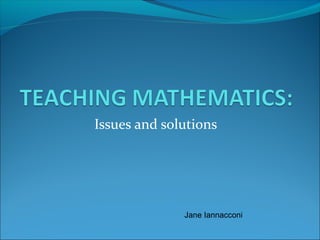




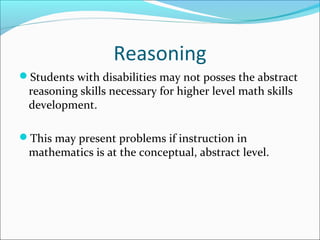

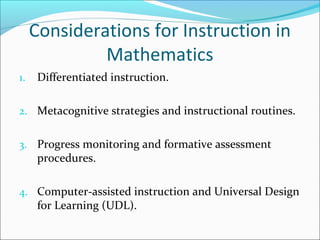


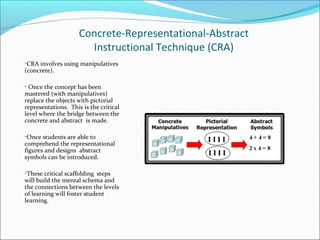

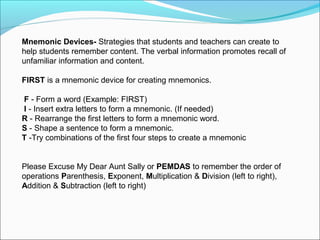








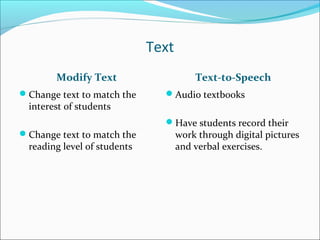
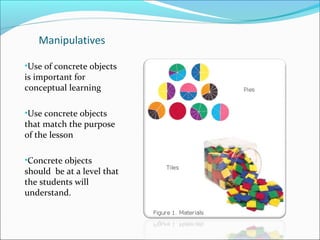




![References
Little, M. E. (2009). Teaching mathematics: issues and
solutions. TEACHING exceptional children plus.6(1),
pages 1-15. Retrieved [September 3, 2010] from
http://journals.cec.sped.org/index.cfm](https://image.slidesharecdn.com/mathissuesandsolutions-170629155009/85/Teaching-Mathematics-28-320.jpg)